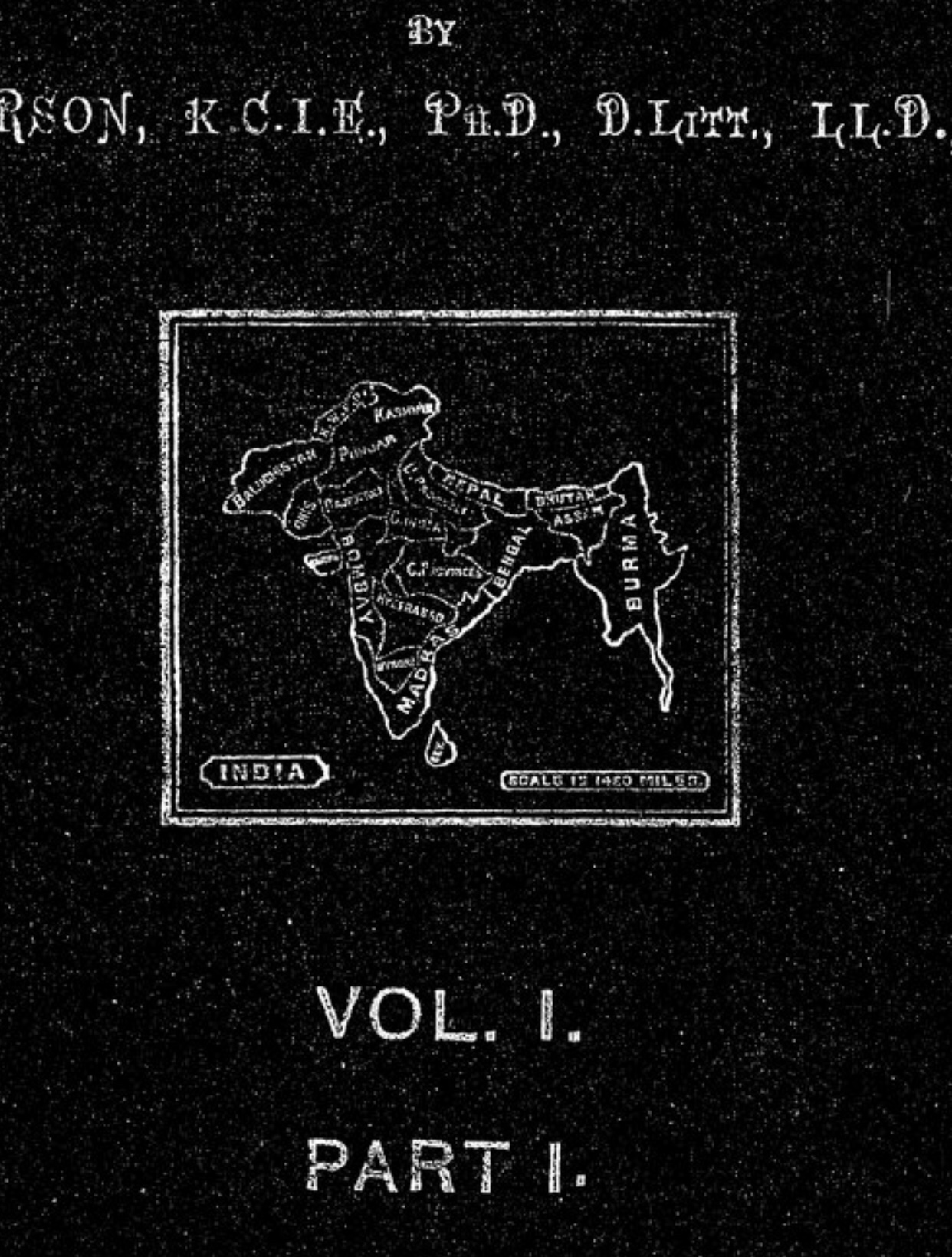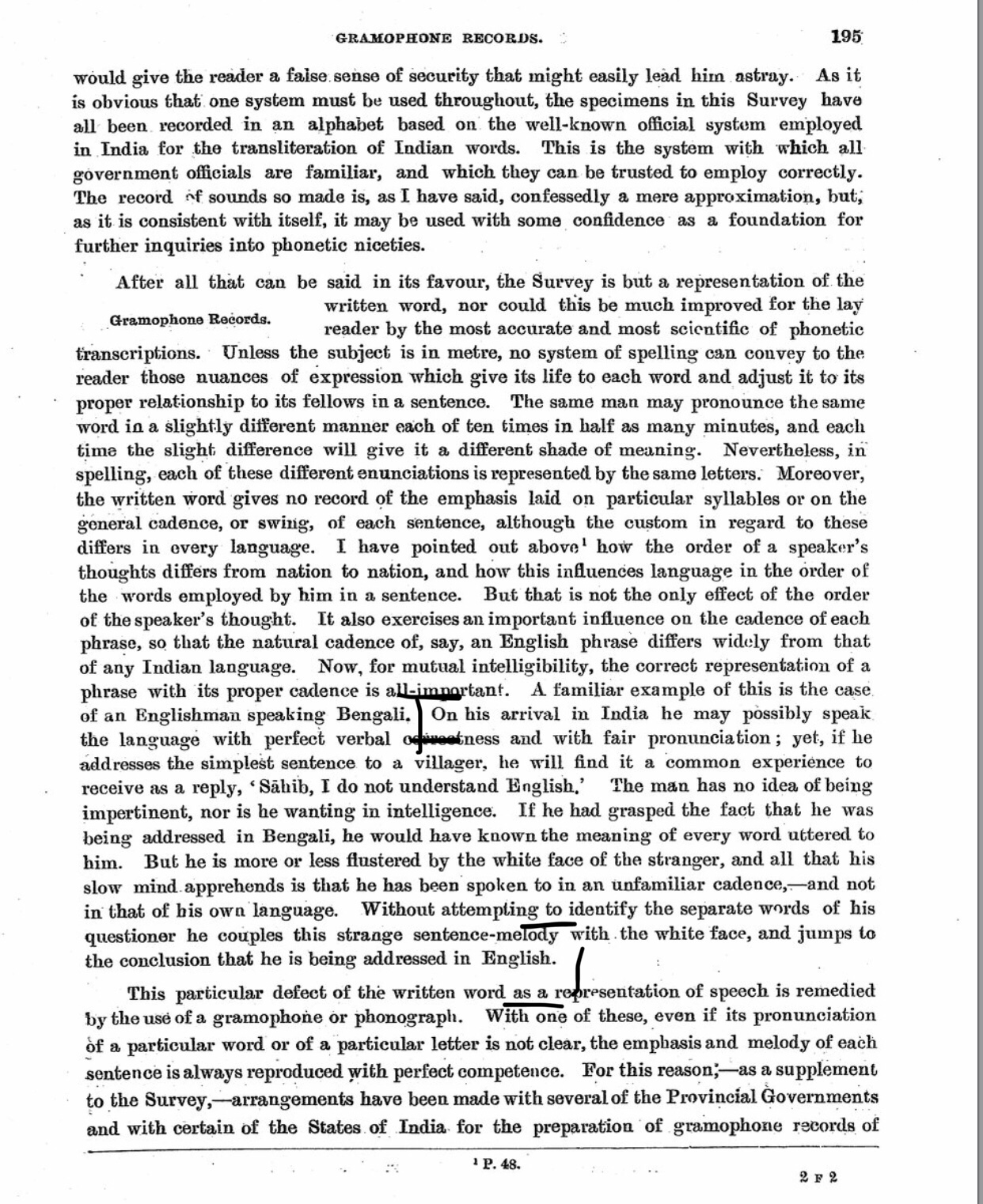As a side note, it will probably help if I create a category/tag for all these lectures.
Grierson’s gramophone recordings of Indian languages & dialects by Professor Javed Majeed

(1.) John Abraham Grierson 1851-1941 : 20 volumes of Indian linguistics survey written between 1903-1928 (Prof Majeed has read them all). Provide lexical and grammatical information for 268 Indian language. Key reference works.
– Language activists in South Asia continue to use Grierson to endorse their demands. As an example activists in Pakistan Punjab use Grierson to justify the view that Seraiki is a separate language to Punjabi, not a dialect, justifying a separate state.
– Grierson shaped the boundaries and personas of regional languages.
– One of the important aspects of the Survey were the Gramophone recordings; initially started before WW1. Oriental Institute, precursor to SOAS, was being floated in London as an educational institute so Grierson wanted to press ahead with the Grammarphone Survey.
– Grierson constantly pointed to the weaknesses of the Linguistic Survey; his gripe that the written word could not represent the cadence or the “swing sentence” or “delicate shades of pronunciation.”
-Grierson points out to the “European inability to hear certain sounds”; colonial ears were deaf to certain sound patterns in Indian languages (retroflexes).
– there were issues of transcribing “tonal languages” especially the Tibeto-Burman languages. He had to interfere in local govt in Assam to get recordings.
– Motivated by inter-European rivalries in linguistics. Grierson was aware of the prisoner recordings by the Germans of Indian POW. In fact the Punjabi recordings were used in 1920 to teach Punjabi in the Oriental College of Lahore. Germany had a colonial institute at Hamburgs; Brits were motivated to catch up with the French, Italian and Germans in the field of colonial linguistics.
– Grierson described British civil service (ICS) candidates pronunciation of Hindustani abominable. Gramophones would allow them to have better pronunciation.
– Grierson’s fear that Brits would be caricatured by Indians for mispronouncing Indian language; would reduce their prestige.
– British officials were wont to “shove every Persian word into their Hindustani.” A fear of British being figures of fun for the Indians. There was a famous Indian Cartoon character who was noted for his “Indian English” and Grierson had a similar fear that would emerge for the “colonial administrator and Hindi.”
(2.) “Estranging effects of mispronunciation.” The white face of the strange and the “native’s slow mind” (Grierson) means that when White civil servants are speaking to peasants in Hindustani or in their own local language; the peasant replied “sorry sorry I don’t speak English.”

I found the original passage (what is shown on screen is marked by my black lines).
– the Gramophone recording are about naturalising British rule and making them sound right phonetically.
Academic contentions – Colonial state had to exert control over the status of writing. Colonial had to also control inflection in the colonial auditory order.
– G foregrounds his authority in being an acute listener. Apparently he can listens to sounds that even Indian listeners cannot pick up.
– they no longer had to depend on Munshis and Pandits as language teachers. Post 1870 they wanted to move away from that.
– small industry in general changed India’s “soundscape.” The linguistic survey uproots Indian voices in their natural environment and then relocated them in a European setting.
– in order to produce the recordings the colonial administrators “dumbed down” Indian auditory environment. He gives an example of musical recordings left unfinished to provide a touch of “authenticity.”
– Written word took precedent over the recording despite G’s efforts otherwise. Lots of discussions about a distinction between the new recordings and old recording.
Q&A / Urdu has “uncertain citizenship”; Grierson has a shaky grasp of Kashmiri.
Questions of authenticity / Grierson finds Tulsidas to be the true soul of India (Ramichantras is absorbed into the marrow of the Indian peasant) unlike English educated Indians. Aryan vs Semitic.
– Discovery of Mohenjardo a “threat”‘to the centrality of Vedic.
– G trained as a Sanskritologist huge emotional investment in Sanskrit as “Queen” of Indo-European philology. This may have blinded philologists from Sanskrit’s borrowing from Dravidian.

“Discovery of Mohenjardo a “threat”‘to the centrality of Vedic.”
LOL. The elites and their delusions.
Saurav, although latent, these academic arguments do impact the general discourse. Although unproven, dravidianist have used it to claim antiquity for their own tradition. Pakistanis have used it to sidestep the Vedic element of their heritage. These at least register as nuisances to nationalists of a certain type.
You are putting the cart before the horse. Pakistan “side steps” Vedic ( and India would have too had it been Muslim majority) because it’s a Muslim majority country, not because of some love of pre Vedic civilization. I don’t know side step would be the correct word though
What Dravidian claim is there and Tamils problem. It does not concern “hindus”. If that’s what they feel , so be it.
For the last time, Hinduism survives not because of elites/upper castes but despite them. That’s why it didn’t meet the same fate as Zoroastrianism. It’s survival depended on the subalterns ( see Pakistan) and as long as they stay , Hinduism stays not withstanding what the next discovery / genetic finding says about where the aryans came from.
I never suggested that either pakistanis or dravidianists were making good faith arguments. The point is that even moderately educated people have heard of something called the indus valley civilization, and it is being used by people to stand in for something as opposed to some other putative thing. It doesn’t matter whether pakistan has love for IVC, but it allows them to create a narrative around their origins, along with the idea of an unalloyed buddhist Taxila, that doesn’t need to reference vedas and hinduism, and hence reinforce antagonism to modern India. Had IVC not been discovered, sure, they would have found another way to distinguish themselves, but it would have required more effort. Academic debates trickle down. Barely educated right wing guys are recycling versions of anti-communist propaganda from decades ago. Post-colonial critiques of empire are being turned upside down to make everything western a christian conspiracy, and this stuff is being spouted by guys who don’t even speak english. Likewise, grassroots leftist activists in india parrot all kinds of marxian arguments. Indians are gifted imitators, it takes increasing less time for ideas to cycle down in to the general discourse.
Broadly i am not disagreeing with you.
I think perhaps it matters in the South because that putative thing before Vedic age matters to them. Broadly in the North no such dichotomy is present, for them IVC =Vedic=Aryan=Hinduism, as simple as that. Its not a value judgement , but just how the way it is.
On Pakistan origin , i think you take Indithings far too seriously, no one in Pakistan makes all this IVC claims and all. The vast majority of them see the advent of Islam as their “creation story” and everything before that as dark ages. With or without IVC they have made no claim to that culture, because their cause for Islam vastly overrides any browny points an IVC “creations story” would give.
And this leaves us with Dravidianist/Marxist etc. There is no use trying to fight that propaganda war, because its a worthless exercise considering i feel its the political difference (North vs South) which is giving rise to academic difference (Hindus VS Dravidian) and not the other way round. As you have rightly noticed (“Had IVC not been discovered, sure, they would have found another way to distinguish themselves”) , it would have happened in this case as well. I have seen some aspect of same “Bengalis are Bengalis, not Hindus/Muslims” in Bengal as well , when it was the high tide of North (Union) vs Bengal (Left dominated) in 90s and 2000s . So its no surprise.
@Saurav I am getting Prof. Majeed on a podcast. It’s ironic that a passing remark generates the most comments 🙂
LOL, all comments are in good faith Zach.
I just feel that diaspora (as well as subcontinent) liberal Muslims feel India was the last bastion of pluralism. In a way they had more hope in India than Indians themselves. I empathize with them .
@Saurav – not at all buddy; a thousand flowers bloom in the ShahenShah’s garden.. 🙂
Voice recordings are a true achievement in concept and scope. Language is primarily auditory and speech and only secondarily written words has not sunk into diglossic cultures like that of Tamils. So there is a tremendous efforts by purists to control the written words. That is a losing battle. Like King Tantalus, the language they want to control is so near yet can’t control it.
Interesting exchange between Saurav and girmit. My vote is on Saurav’s views. Pak has really shown no interest in IVC. AFAIK, no ancient DNA analysis of IVC is going on on the Pak side. OTOH, ancient DNA of IVC has already been featured as the cover story in two of India’s major news magazines, even when the official results are not even out yet!
“AFAIK, no ancient DNA analysis of IVC is going on on the Pak side. ”
Lets just say the IVC would be 100 percent DNA match with Pakistan folks. Even then Pakistan wont /wouldn’t be able to “own” IVC . Islam wont allow it.
That’s the point.
[…] as aside we just recorded the 50th BrownCast episode with Professor Majeed on Grierson’s LSI. We started on the 14th of October with Episode 1 (Episode 1 is actually Episode 2 since Razib […]